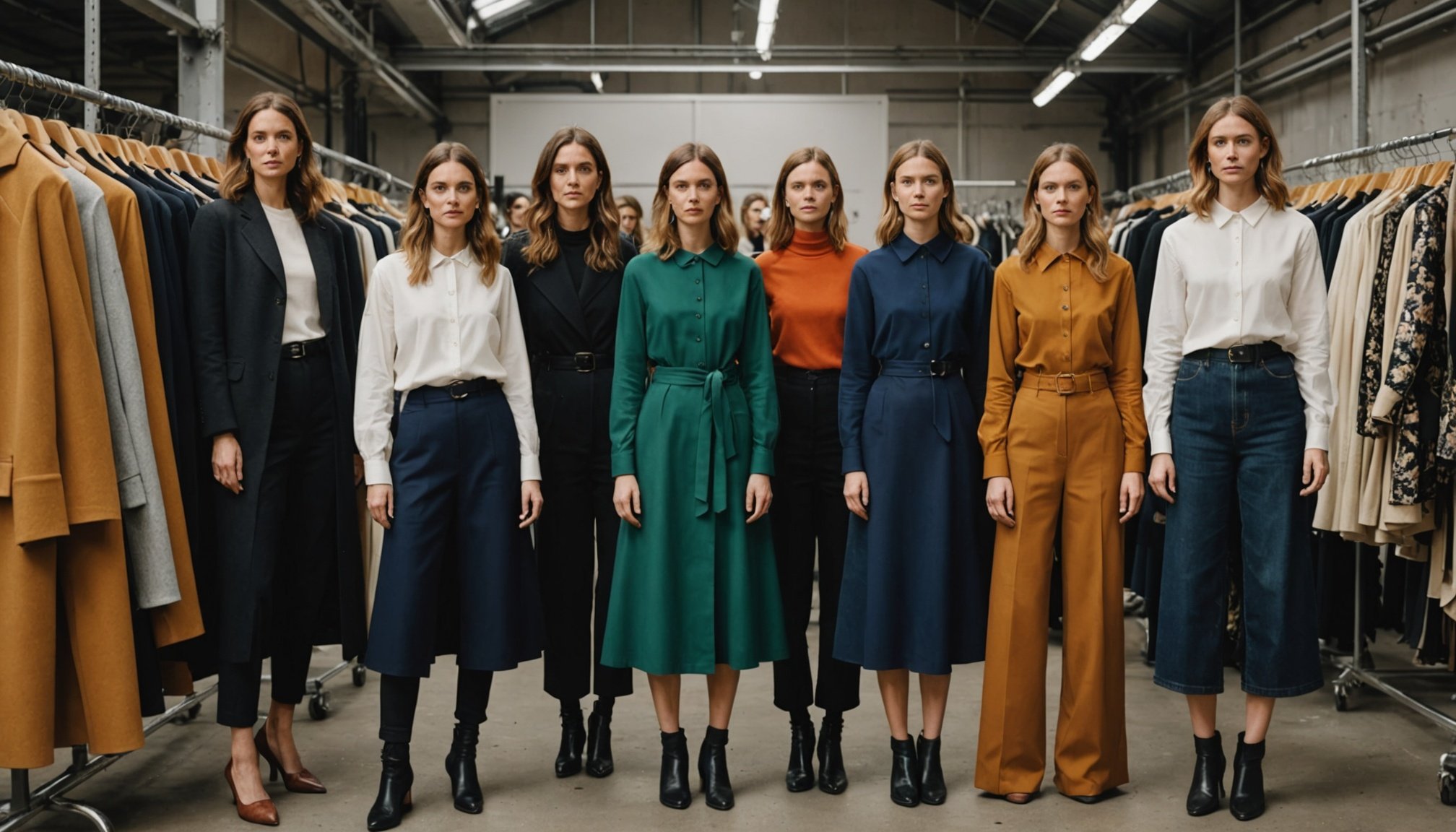Overview of Sustainable Fabrics in Women’s Fashion
In recent years, sustainable fabrics have emerged as significant players in women’s fashion trends, particularly within the UK. These materials are designed to lessen the environmental impact of fashion, predominantly characterised by the use of organic, renewable, and recycled resources. Classified into categories such as organic cotton, Tencel lyocell, and recycled polyester, these fabrics emphasize ecological preservation while maintaining style and quality.
The rise of sustainable fashion is notably marked by an increasing preference among UK consumers for eco-friendly clothing solutions, driven by a growing awareness of environmental issues. Statistics underline this shift; for instance, a 2022 report highlighted a 30% increase in sales of sustainable fabrics across major UK retailers compared to the previous year. These figures suggest a marked change in consumer attitudes, reflecting a broader societal push towards sustainability.
Also to read : Unlock Luscious Locks: Essential Vitamins and Supplements for Promoting Hair Growth
The prominence of these eco-friendly materials in today’s fashion scene not only challenges traditional production methods but sets a precedent for future innovations. Women’s fashion is at the forefront, showcasing the harmonious blend of environmental consciousness and contemporary style.
Types of Sustainable Fabrics in Use
The use of eco-friendly materials in fashion has spurred significant innovation in textiles, giving rise to various types of sustainable fabrics. These materials are reshaping the landscape of fashion, offering viable alternatives to conventional textiles.
Also read : Unlock Your Perfect Nude Lipstick: A Tailored Guide to Flattering Shades for Every Skin Tone
Organic Cotton
Organic cotton is a leading type of sustainable fabric. It differs from traditional cotton through its cultivation, devoid of synthetic pesticides and fertilisers. This contributes significantly to reducing environmental impact. Fashion brands embrace it not just for sustainability but also for its softness and breathability, appealing to eco-conscious consumers.
Tencel Lyocell
Tencel Lyocell is another notable option, celebrated for its environmental advantages. Produced from sustainably sourced wood pulp, it displays robust properties, such as moisture management and comfort. Its closed-loop production process significantly minimises water usage and emissions, making it a forward-looking choice in eco-friendly materials.
Recycled Polyester
Lastly, recycled polyester plays a pivotal role in waste reduction. Made by reclaiming plastic bottles and manufacturing waste, it alleviates landfill pressure and conserves resources. This innovative approach not only addresses environmental concerns but also supports circular fashion by repurposing materials thus contributing to sustainability efforts.
Brands Leading the Sustainable Fabric Movement
The sustainable fashion landscape in the UK is shaped by several pioneering brands, each adopting innovative approaches to eco-friendly apparel. These sustainable fashion brands are at the forefront, championing not only the use of sustainable fabrics but also embracing ethical practices throughout their supply chains.
One noteworthy example is Stella McCartney, a brand synonymous with ethical fashion. By focusing on transparency and environmental stewardship, McCartney has set a benchmark in the industry. Their commitment is evident in the meticulous selection of materials and maintaining a transparent supply chain. Such dedication ensures consumers understand the origin and production process of their garments.
An emerging player in this segment is People Tree, celebrated for its fair trade practices. The brand puts a spotlight on worker rights, proving that social responsibility can coexist with style. Their collections, crafted using organic cotton and low-impact dyes, further illustrate their commitment to sustainability.
Beyond individual efforts, consumer perception plays a critical role in a brand’s success. As awareness grows, companies prioritising sustainable practices find themselves rewarded with increased loyalty and market share. This shift underscores the significant impact of informed, ethically-driven consumer choices in shaping the future of fashion.
Consumer Awareness and Demand
In recent years, there has been a notable increase in sustainable fashion awareness, primarily driven by evolving consumer behavior and ethical purchasing trends. Consumers are becoming more conscious of how their fashion choices impact the planet, leading to a demand for products that reflect their values. This shift is evident in the growing preference for sustainable products among eco-aware individuals.
Research indicates that a significant portion of consumers are willing to invest more in sustainable fashion. Such findings suggest that ethical considerations are taking precedence over cost in purchasing decisions. This willingness often stems from the desire to contribute positively to environmental sustainability and social responsibility.
Social media plays a crucial role in amplifying awareness around sustainable fashion. Platforms like Instagram and TikTok allow brands and influencers to showcase eco-friendly products, thereby reaching broader audiences and fostering informed consumer choices. This digital engagement empowers individuals to easily access information and align their fashion choices with their ethical values. As consumers become more educated about sustainable options, it is expected that the demand for eco-conscious products will continue to surge, reshaping the landscape of the fashion industry.
Environmental and Ethical Implications
The shift towards ethical fashion has vast environmental and social implications. By prioritising environmentally conscious materials, the fashion industry plays a significant role in promoting environmental sustainability. Sustainable fabrics frequently use less water, fewer chemicals, and reduce CO2 emissions compared to their conventional counterparts. This not only contributes to a healthier planet but also aligns with growing eco-conscious consumer values.
From a social perspective, the integration of sustainable practices highlights the importance of social responsibility. Fair trade and ethical labor practices ensure that the workers involved in garment production are granted fair wages and safe working conditions. These aspects are becoming essential consumer considerations, influencing purchasing decisions.
Additionally, understanding the lifecycle of sustainable garments—design, production, and disposal—is crucial. Emphasising durability and recyclability mitigates negative environmental impact and promotes a circular model. As awareness grows, so does the demand for transparency regarding the entire lifecycle of products. This demand can drive brands to adopt more ethical practices, ultimately bolstering the movement towards a more sustainable and just fashion industry.
Challenges Facing the Sustainable Fashion Movement
The sustainable fashion movement is reshaping the industry, but not without obstacles. One key challenge is the supply chain difficulties associated with acquiring sustainable materials. These materials often require more intensive tracking and verification processes to ensure their eco-friendly credentials, leading to potential delays and increased complexities in production.
Furthermore, the higher production costs present significant hurdles. Sustainable fabrics, due to their specialised nature and ethical sourcing, often come with a hefty price tag. This necessitates strategic pricing methods to balance affordability and profit margins. Many brands struggle to remain competitive while adhering to ethical standards, sometimes passing costs onto consumers.
Resistance from traditional fashion industry players compounds these issues. Some established brands are hesitant to overhaul their production processes, fearing short-term financial losses or customer alienation. Industry veterans may challenge innovations, favouring time-tested methods over sustainable alternatives.
Collectively, these challenges emphasise the need for collaborative efforts in the sustainable fashion sector. Overcoming these barriers will require investment in technology, supportive policies, and an industry-wide commitment to change, ensuring that sustainability becomes a mainstream and viable component of fashion.
Future Trends in Sustainable Fabrics
Looking ahead, the future of fashion is tipped to undergo significant transformation with innovative sustainable materials gaining ground. Emerging technologies are pivotal in this shift, with advancements like lab-grown textiles and bio-fabrics poised to redefine sustainability standards. These innovations promise not only to lessen environmental footprints but also to offer novel textures and enhanced durability.
Predictions indicate a rise in consumer demand for these groundbreaking materials. By 2030, there is expected to be a substantial pivot towards eco-forward choices, driven by heightened environmental consciousness and changing consumer trends. As shoppers become more discerning, the emphasis will likely be on transparency and ethical practices.
Furthermore, prospective legislation could play a transformative role. Policymakers are increasingly eyeing stricter regulations on non-sustainable practices, potentially fostering a more responsible fashion landscape. This could propel retailers and manufacturers to prioritise eco-friendly approaches, embedding sustainability deeper into the industry fabric. The pursuit of greener fashion is anticipated to not only cater to environmental demands but also ensure a competitive edge for early adopters, setting new benchmarks for global fashion practices.











